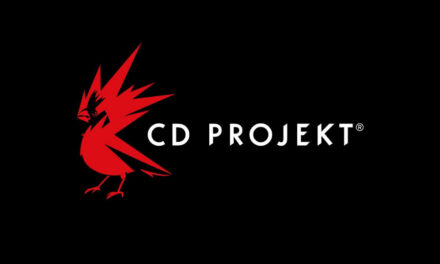
A Comprehensive Guide to Data Management Platforms (DMPs)

In the fast-evolving world of digital marketing and advertising, the ability to leverage data effectively can be a game-changer. Data Management Platform (DMPs) play a crucial role in this ecosystem, offering advertisers and marketers the tools they need to organize, analyze, and activate large amounts of data for targeted advertising campaigns. In this comprehensive guide, we’ll explore what DMPs are, how they work, and how they can help enhance advertising strategies, especially in the context of connected TV advertising, performance marketing, and demand generation.
What is a Data Management Platform?
A Data Management Platform (DMP) is a centralized system used to collect, store, and organize data from multiple sources. DMPs allow marketers to manage first-party, second-party, and third-party data to build detailed audience profiles that can be used to enhance advertising efforts. The primary objective of a DMP is to analyze and segment data to create more effective and personalized ad campaigns.
DMPs are essential for advertisers who want to harness the power of data to deliver more targeted ads across different platforms, including programmatic advertising channels and connected TV advertising. By using a DMP, advertisers can ensure they are reaching the right audience at the right time, thereby improving the effectiveness of their campaigns.
Key Functions of a DMP
- Data Collection: A DMP collects data from multiple sources, such as website visits, mobile apps, CRM systems, social media, and third-party data providers.
- Data Segmentation: The platform organizes this data into various segments based on behavior, demographics, interests, and other characteristics.
- Audience Building: Advertisers can create highly-targeted audience profiles based on the segmented data to improve the precision of their ad campaigns.
- Data Activation: DMPs enable marketers to activate data across different advertising platforms, such as connected TV (CTV) and programmatic advertising, ensuring ads are delivered to the most relevant audiences.
How Does a Data Management Platform Work?
The workflow of a data management platform typically involves the following steps:
1. Data Ingestion
The first step in a DMP’s process is data ingestion, where the platform gathers data from various sources. These sources can include:
- First-party data: Collected directly from a company’s own sources, such as website analytics, CRM data, or mobile app interactions.
- Second-party data: Obtained through partnerships or data-sharing agreements with other companies.
- Third-party data: Purchased from data aggregators and providers that collect information from external sources like surveys, cookies, or offline purchase data.
DMPs help combine all these data sources into a unified view, giving advertisers a more complete understanding of their audiences.
2. Data Organization and Segmentation
Once data is ingested, the DMP organizes it into relevant categories and segments. This is one of the most important functions of the platform, as it allows marketers to create custom audience segments. For instance, advertisers can segment audiences based on:
- Demographics (age, gender, location)
- Behavior (online activity, shopping habits)
- Device usage (desktop, mobile, connected TV)
- Interests and preferences (content viewed, products purchased)
By segmenting data, advertisers can ensure their ads are tailored to specific audience groups, resulting in more effective campaigns.
3. Audience Creation
Using the segmented data, advertisers can build audience profiles that align with their campaign objectives. For instance, a company looking to promote a new streaming service on connected TV can create audience segments based on viewing habits, device preferences, and content interests.
4. Data Activation
After creating targeted audience profiles, advertisers can activate the data through various channels. DMPs integrate with demand-side platforms (DSPs) and supply-side platforms (SSPs), allowing advertisers to push their audience data into real-time bidding systems for programmatic advertising. This ensures that ads are delivered to the right people at the right time across different platforms, including display, mobile, and connected TV advertising.
Benefits of Using a DMP in Digital Marketing
DMPs offer several key benefits for advertisers, particularly in today’s digital landscape where precision targeting and data-driven decision-making are crucial.
1. Improved Audience Targeting
A data management platform allows marketers to create highly-targeted audience segments based on a combination of behavioral, demographic, and contextual data. This leads to more personalized advertising campaigns that resonate with specific audience groups, increasing the likelihood of engagement and conversions.
2. Seamless Multi-Channel Campaigns
In a world where consumers engage with content across multiple devices, including desktops, smartphones, and connected TVs, it’s important for advertisers to deliver a consistent message across all platforms. DMPs enable advertisers to manage and activate data across different channels, ensuring their campaigns reach users whether they’re watching TV, browsing the web, or using mobile apps.
3. Data-Driven Decision Making
DMPs provide advertisers with actionable insights derived from vast amounts of data. Marketers can track the performance of their campaigns in real-time, allowing them to adjust their strategies based on which audience segments are engaging the most. This data-driven approach ensures that advertising budgets are spent more efficiently.
4. Enhanced Personalization
By using detailed audience data, advertisers can personalize their ads to match the preferences and behaviors of individual users. Personalization is especially important in connected TV advertising, where viewers expect relevant and engaging content. Ads that are tailored to the viewer’s interests can result in higher engagement rates and improved brand perception.
5. Efficient Media Buying
DMPs can optimize media buying by ensuring that ad spend is allocated to the most relevant and valuable audience segments. This reduces wasted ad impressions and improves return on investment (ROI) by ensuring ads are shown to users who are more likely to engage with them.
The Role of DMPs in Connected TV Advertising
Connected TV (CTV) advertising is rapidly growing in popularity as more consumers shift from traditional cable TV to streaming platforms. In this environment, DMPs are becoming increasingly important for advertisers who want to reach specific audiences on connected TV devices.
Why DMPs Matter for CTV Advertising
DMPs help advertisers leverage data to create targeted campaigns that reach viewers based on their behavior, viewing habits, and device usage. By using data from a DMP, advertisers can ensure that their connected TV ads are shown to the most relevant audiences, improving both the effectiveness of the campaign and the viewer’s experience.
For instance, a brand promoting a new series on a streaming service can use a DMP to target viewers who have shown interest in similar genres or who frequently watch content on connected TV devices. This level of precision ensures that CTV ads are more relevant and engaging.
Integrating DMPs with Programmatic Advertising
Programmatic advertising plays a crucial role in connected TV advertising. DMPs enable the integration of data with programmatic platforms, allowing for automated, real-time bidding and ad placements. This ensures that ads are delivered to the right audience at the right time, maximizing the impact of the campaign.
DMPs vs. CDPs: Understanding the Difference
While DMPs and Customer Data Platforms (CDPs) are often used interchangeably, they serve different purposes. It’s important for advertisers to understand the key differences between the two.
Data Management Platform (DMP)
- Focus: Primarily uses anonymous data (e.g., cookies) to build audience segments for targeted advertising.
- Data Types: Handles first-party, second-party, and third-party data.
- Purpose: Primarily used for audience targeting in programmatic advertising, including display and connected TV ads.
Customer Data Platform (CDP)
- Focus: Uses first-party, identifiable data to build a comprehensive customer profile.
- Data Types: Primarily handles first-party data (e.g., CRM data, transactional data).
- Purpose: Used for customer relationship management, personalization, and retention marketing.
While DMPs focus on anonymous data for targeted advertising, CDPs focus on managing customer relationships by unifying identifiable data.
The Future of Data Management Platforms
As privacy regulations evolve and cookies become less reliable due to restrictions in web browsers, the role of data management platforms may shift. However, the need for audience segmentation and data-driven marketing remains strong. Advertisers will likely need to adapt to new ways of collecting and analyzing data, such as using first-party data from connected TV devices or leveraging privacy-friendly data sources for programmatic advertising.
Conclusion
Data Management Platforms (DMPs) are indispensable tools for advertisers looking to harness the power of data to create more targeted, personalized, and effective campaigns. By organizing data, segmenting audiences, and activating insights across various platforms, DMPs allow marketers to improve their advertising strategies. Whether it’s connected TV advertising, programmatic advertising, or demand generation, DMPs help advertisers reach the right audiences and optimize their campaigns for better results.
By understanding how a data management platform can be leveraged in digital marketing, advertisers can stay ahead in an increasingly competitive and data-driven world.



























